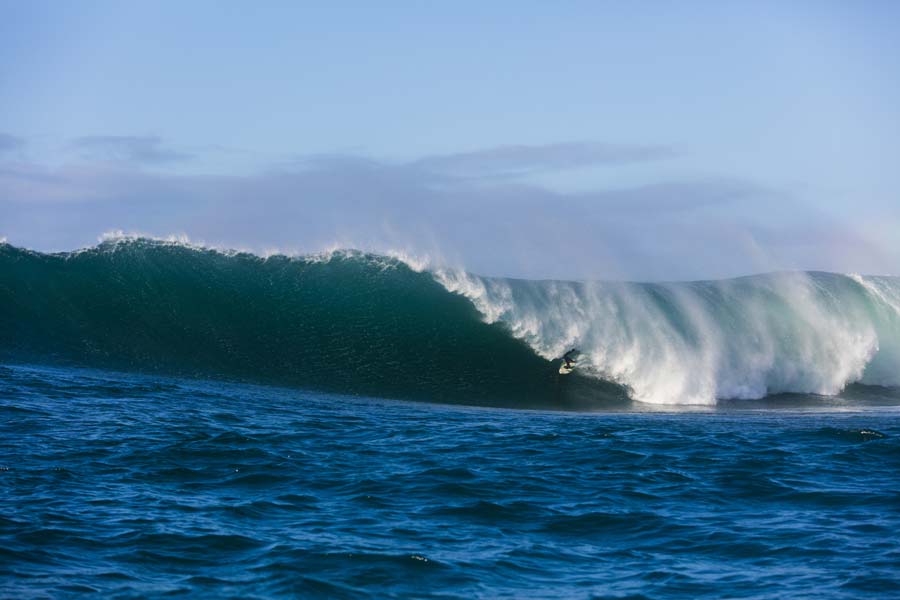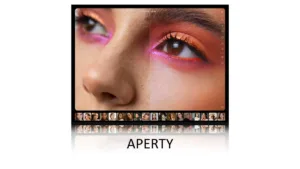Derek Morrison is an award-winning Kiwi photographer and author based in Dunedin, New Zealand.
A versatile photographer, Derek is happy to take on many different genres. But on most days, you’re most likely to find him and his camera wherever the surf is.
As a surfer himself, Derek’s passion for the sport has led him to become one of New Zealand’s best-known surf photographers and the founder of the New Zealand Surf Journal. His weekly blog, Box of Light, has become essential reading for all Kiwi board riders and a home for stunning surf imagery; including an image that won him New Zealand Geographic’s Photographer of the Year.

Beyond writing his weekly blog, Derek has produced several books. Seasons is a photographic love letter to Dunedin’s spectacular coastal scenery whilst Surf Dreams explores some of New Zealand’s best breaks and those who surf them.
But it’s not always about the coast. For his book, Life on Muzzle, Derek visited New Zealand’s most remote farming station and for Merino Country, Derek and writer Paul Hersey teamed up to explore some of New Zealand’s least visited and most beautiful regions.
And in Living the Dream, we find Derek back near the water documenting New Zealand’s enviable coastal lifestyle.
I caught up with Derek to chat about photography and what he’s got going on.
How did you get into photography?
I was at Massey University studying Veterinary Science and in my second year, I was doing a full load of science: biochemistry, biology, and physics. I also did a short course to learn how to develop photos in a darkroom and how to take photos thanks to my flatmate who loaned me her camera. I also started to go surfing to remote places with a big crew of surfers from around the country.

It cost me $1 everytime I pressed the shutter. I only shot Fuji Velvia and made a lot of awful photos
Derek Morrison
On one of these surf trips, I shot a heap of images and sent them to the legendary surf journalist Chris Berge at New Zealand Surfing Magazine. He ran them in one of his magazines and sent me a cheque for $137. That was it for me. Vets were being funneled into research labs at the time and I wanted to be outdoors for the rest of my life.
So I left university and went freelance. I did one travel photojournalism course through an Australian journalism association and that showed me how to make a living. Then I spent the next 10 years working hard to learn the craft. I lived in my car a lot. Ate a lot of noodles. It cost me $1 every time I pressed the shutter. I only shot Fuji Velvia and made a lot of awful photos.
Who or what influences your work?
I’m influenced by most photographers. I love how everyone sees and interprets things differently. Even on Instagram, I find a lot of inspiration from all sorts of photographers – even amateurs who shoot amazing work just for fun.
My mentor Kim Westerskov has had a huge influence on me. He has challenged me creatively. Surf photography when I came through in New Zealand was all about the very best technical image and that pursuit of perfection came at a cost to creativity. The ingredients were set in concrete: Fuji Velvia pushed to 80, the blue sky only, front lighting, 1/500th, and sharp as a tack.

That became ingrained in me and Kim helped me to break free of that. I also became incredibly influenced by a Kiwi photographer called Robin Hammond who spoke at an NZ Geo awards night about how he uses photography to provide a voice for those in marginalized communities.
It moved me and his storytelling struck a chord with me so now I try to consider the story more in my work. And I try to give a voice to some important messages out there that need to be shared … like educating people around the sea lions along the Otago coastline through photography. Right now it is wildlife photographers Paul Nicklen, Frans Lanting, and Joel Sartore who seem to be occupying my mind and feed. I also lurk in galleries and draw inspiration from artists and their color palettes, brush strokes, and styles.
How do you deal with creative ruts?
They happen occasionally and I’ve found the best way is to throw yourself in the deep end of a new project that’s outside your comfort zone. That may mean shooting an entirely new subject, or filming, or taking one lens only on a trip and using it for everything. When I was snowboarding I found that if I felt stale I would snowboard switch for the entire day and only move back to natural stance at the end of the day and for me, it was an incredible reset.

It’s kind of the same with photography. The variety of styles and the different lighting and equipment can make it very challenging at times, but they all lead back to help you become a better photographer. I used to shoot just on the big jobs and in between, I’d hardly touch my camera.
Now I shoot something every day and have fewer ruts. I’m nearly always inspired. I have to put the camera down when we go camping and on family trips just to give my family a break more than anything.
What photography advice would you give to your younger self?
Well, I should have gone to a photography school and learned in five years what it took me 10 years to learn. Those 10 years were some of the best of my life though – just living from day-to-day without much guarantee of income at all.

..surving in the profession of photography is more about running a good business than your skill with a camera.
DEREK MORRISON
I survived and managed by bulk rolling Velvia and living very frugally for many years. I had a great network of friends as well who made it possible. I also feel like I could have benefitted from having a better understanding of business.
At the end of the day surviving in the profession of photography is more about running a good business than your skill with the camera. There are a lot of ultra-talented photographers who gave it away because the business side collapsed on them. So train, work hard and learn the business and have fun along the way.
What equipment do you like to use?
I’m completely Canon and making the transition from EF to RF right now. That’s a costly exercise, but ultimately it’s necessary because the RF system is miles ahead of EF.
I use an Aquatica dive housing and have just upgraded to the Aquatech Edge R5 surface housing. That enables me to take advantage of the R5 wizardry in the water which is pretty amazing, to be honest. I’m loving the R5. It’s a game-changer and has changed everything about the way I work.
For example, I shoot for Photosport occasionally and when I do I use eye-tracking to focus on an All Black running full tilt at me. Bang, the shot is nailed. I pick the best one and right there, from the sideline, while still tracking play, I send it to our FTP server.

For lighting I have big octa boxes, softboxes, umbrellas, and a beauty dish all powered by Speedlites – I’m always on location so they are perfect in gangs of 2 or 3. My supports are all Manfrotto just because it is such good gear.
I’m often shooting for clients in the North Island also so I have a full studio set up at the family farm near Cambridge. It’s a replica of my Dunedin lighting kit so that makes it easy to work up there and allows me to keep just below the weight threshold on planes.
My lenses include my EF 14mm f/2.8L, EF 24-70mm f/2.8L, EF 85mm f/1.2L, EF 70-200mm f/2.8L II, EF 300mm f/2.8L, and my EF 400mm f/2.8L. My specialty lenses include my EF 17mm Tilt Shift and RF 50mm f/1.2L. So, yes you can see it is a costly transition to a full RF kit.
What software do you use to process your photos?
My workflow is all Adobe: Bridge into Photoshop. I have tried Lightroom but don’t like the file management and for me, Bridge is so powerful and especially with big files and big shoots.

All my work sits on a large 80TB Synology NAS as well. That has been an incredible addition after I outgrew my previous NAS. With the Synology NAS, I can send a direct link for clients to access selects and hi-res images. It’s super simple and saves me a heap of time.
Dropbox and Box were becoming too clunky for the really big files. For some of my clients, I produce large 200-300MP images for a billboard or large printed displays so very quickly exhausted file transfer limits. I use Final Cut Pro for editing films. About 40% of my commercial work is now filming.
What have you got coming up?
My plan for the break is to spend time with family and surf as much of the New Zealand coastline between Xmas and February as we can, Covid pending.
Hopefully, a big lap of the country if all goes well: Catlins, Riverton, Central Otago, Westport (for the surf nationals), Taranaki, Raglan, Whangamata, Gisborne, Mahia, Westport (for another comp) and then back to Dunedin for a late start at school.

February is booked pretty solid with commercial work for me – mostly December shoots that got canned with the bad weather in the North Island. I’m also working on a new art series that explores what the world might look like if humans never tried to control nature, but became a part of it instead. Living and dying like animals – just a strand in the fabric of our natural world. It’s very challenging for me, but I like where the series is going.
Other than that NZ Surf Journal is thriving and requires a lot of my time. I love the editorial work and NZSJ lets me, and other photographers and writers, tell a unique New Zealand surf story. There is a rumor of a new Box of Light book on the horizon, too … Box of Light, which is free to subscribe to, turns 11 in September 2022. And of course, I hope to do a lot of surfing with my kids Taya, Rewa, and Keo, who are now all way better than me.
Find out more
If you would like to explore more of Derek Morrisons’ work; drop by Box of Light for prints and books. It’s also well worth subscribing to his photo-rich weekly blog. And if you would like to get to know New Zealand’s surfing scene, the New Zealand Surf Journal is a great place to start.
Discounts, news, and gear
Subscribe to my weekly email for more posts like this as well as news and discounts on gear and software.
Recent Posts
- Aperty – Dedicated AI-Powered Portrait Enhancement
- ON1 Photo Raw 2024.5 Review – A little Unfriendly, Very Rewarding
- Topaz Photo AI Review – Excellence in Slow Motion
- Gigapixel Review – Is it Fixed?
- Best Noise Reduction Software 2024 – 8 Denoisers Ranked
- ON1 NoNoise AI 2024 Review – Outstanding and Affordable







